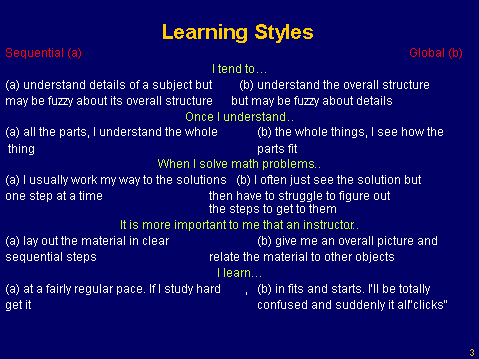
tend to learn in large jumps, absorbing material almost randomly without seeing connections, and then suddenly "getting it."
may be able to solve complex problems quickly or put things together in novel ways once they have grasped the big picture, but they may have difficulty explaining how they did it.
tend to gain understanding in linear steps, with each step following logically from the previous one.
tend to follow logical stepwise paths in finding solutions.

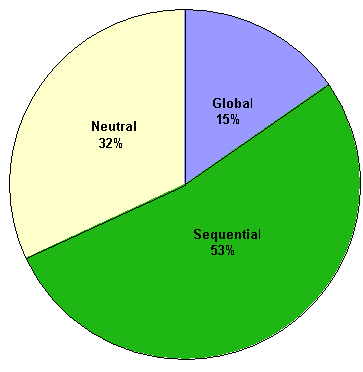
University of Michigan, 2001 Winter Class CRE
Return to How to Use CD to help your learning style
tend to retain and understand information best by doing something active with it--discussing or applying it or explaining it to others.
tend to like group work.
don't like sitting through lectures without getting to do anything physical but take notes.
tend to make statements like "Let's try it out and see how it works"
prefer to think about it quietly first.
prefer working alone.
don't like sitting through lectures without getting to do anything physical but take notes.
tend to make statements like "Let's think it through first, before we try it out".
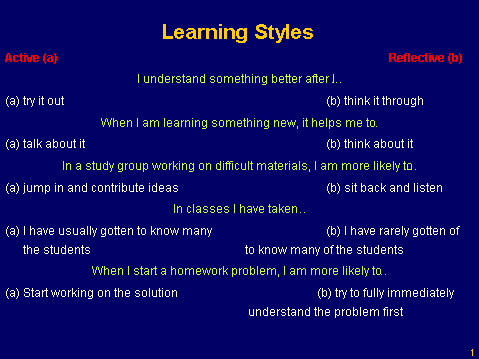
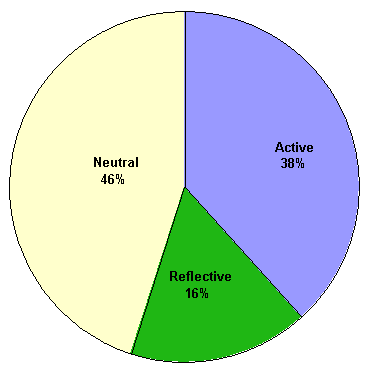
University of Michigan, 2001 Winter Class CRE
Return to How to Use CD to help your learning style
tend to like learning facts.
like solving problems by well-established methods.
dislike complications and surprises.
tend to be patient with details and good at memorizing facts and doing hands-on (laboratory) work.
don't like courses that have no apparent connection to the real world.
often prefer discovering possibilities and relationships.
like innovation and dislike repetition.
may be better at grasping new concepts and are often more comfortable than sensors with abstractions and mathematical formulations.
* tend to work faster and to be more innovative than sensors.
* don't like "plug-and-chug" courses that involve a lot of memorization and routine calculations.
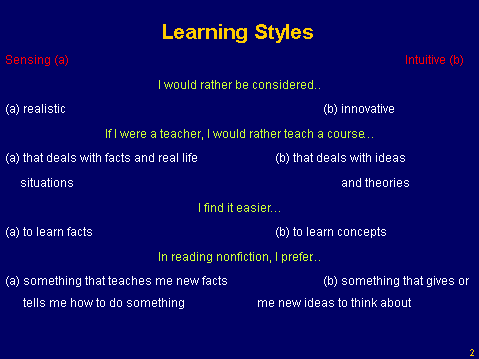
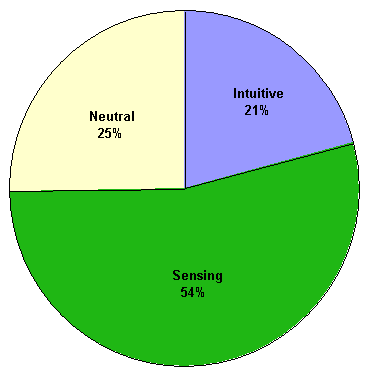
University of Michigan, 2001 Winter Class CRE
Return to How to Use CD to help your learning style
remember best what they see--pictures, diagrams, flow charts, time lines, films, and demonstrations.
get more out of words--written and spoken explanations. Everyone learns more when information is presented both visually and verbally.
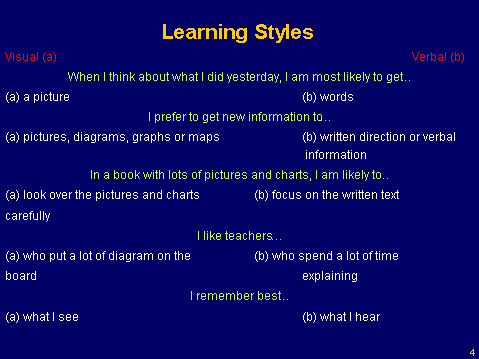
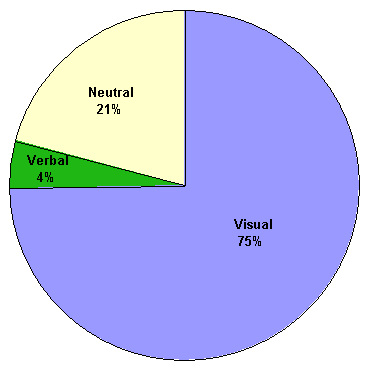
University of Michigan, 2001 Winter Class CRE
Return to How to Use CD to help your learning style
For more information on learning styles visit the Asynchronous Learning website.